Birding and art-making may be the perfect self-care recipe
plus encounters with a strikingly beautiful and courageous duck
Happy New Year fellow bird lovers! I hope the holiday season has gifted you with some quiet time out in nature. It was fun ringing in 2025 with you in the chat and hearing all about your first birds of the year! Mine was a Northern Cardinal, which I commemorated in my nature journal with a sketch and haiku.
For me, this week brought me some quiet time with family, more opportunities to bird than I usually get on weekdays, and a return to work. Part of that work was reviewing talks I’m giving for a veterinary conference next month, one of which covers compassion fatigue (a huge issue in veterinary medicine and a wide array of helping professions). To prevent this talk from being an absolute downer, I focus primarily on evidence-based practices to build resilience and prevent or reduce burnout—in other words, it’s a lot about self care.
Birding and art may be the perfect recipe for self-care
I suspect I’m probably the 566-millionth person to write about self-care in a newsletter, but in reviewing my notes on these evidence-based practices, I found that birding and art-making tick most of the boxes.
Building Resilience
The four core elements of resilience are adequate rest, good nutrition, active relaxation, and physical activity.
Birding encourages both regular physical activity and it’s a form of active relaxation—you can consider it a form of walking meditation, or an “awe walk” if you prefer.
Art-making can also be a form of active relaxation. If you’ve ever gotten into the flow state while making something, you’ve felt this. In terms of physical activity, wildlife photography, painting murals, weaving, and throwing pottery are just a few practices that can be quite physical.
Spending time in nature
There is ever increasing evidence on the benefits of spending time in nature or even just looking at nature. Birding encourages both. In my personal study of 1, birding has:
brought me outside more often in more types of weather
encouraged exploration of a wider range of nature spaces in my community
helped me both notice and care more about the environment by being so tuned into the birdlife
It’s a great gateway drug for all things nature in that way.
When it comes to art-making, focusing on nature subjects ticks this box, but making art about nature while being in nature is even better. This is where nature journaling really shines. In the wonderful words of John Muir Laws:
Nature Journaling will enrich your experiences and develop observation, curiosity, gratitude, reverence, memory, and the skills of a naturalist. It helps you discover, think, remember, and integrate new information with your existing knowledge. Train your mind, and the world will offer you its secrets of wonder and beauty.
Susannah Fisher also wrote beautifully about this in this week’s issue of the Cricklewood Nature Journal
Awe-inspiring experiences are as convenient as stepping outside. Nature journaling is a way to let curiosity play across the pages in words and pictures, zooming in on the minutiae, and then pulling back to see how it all marvelously fits into a bigger tableau. It can be done in solitude or in community. The best part is that it is a collection of awe waiting for the journaler to revisit as many times as needed for a boost of wonder.
Yeeeessssss!
Skill building
Once again, birding and art-making tick these boxes.
If you’re a birder, it starts with learning how to ID the common birds around you, then the migrants and rarities (and here in North America, the confusing fall warblers). At some point raptors and ducks might catch your fancy, you’ll become obsessed with shorebirds, and if you’re really into a challenge, you’ll eventually tackle gulls. There’s always something to learn to improve your skills, whether it’s ID-ing birds by ear, learning a new field mark you never noticed before, or learning the different flight styles of species. It’s a never ending learning adventure.
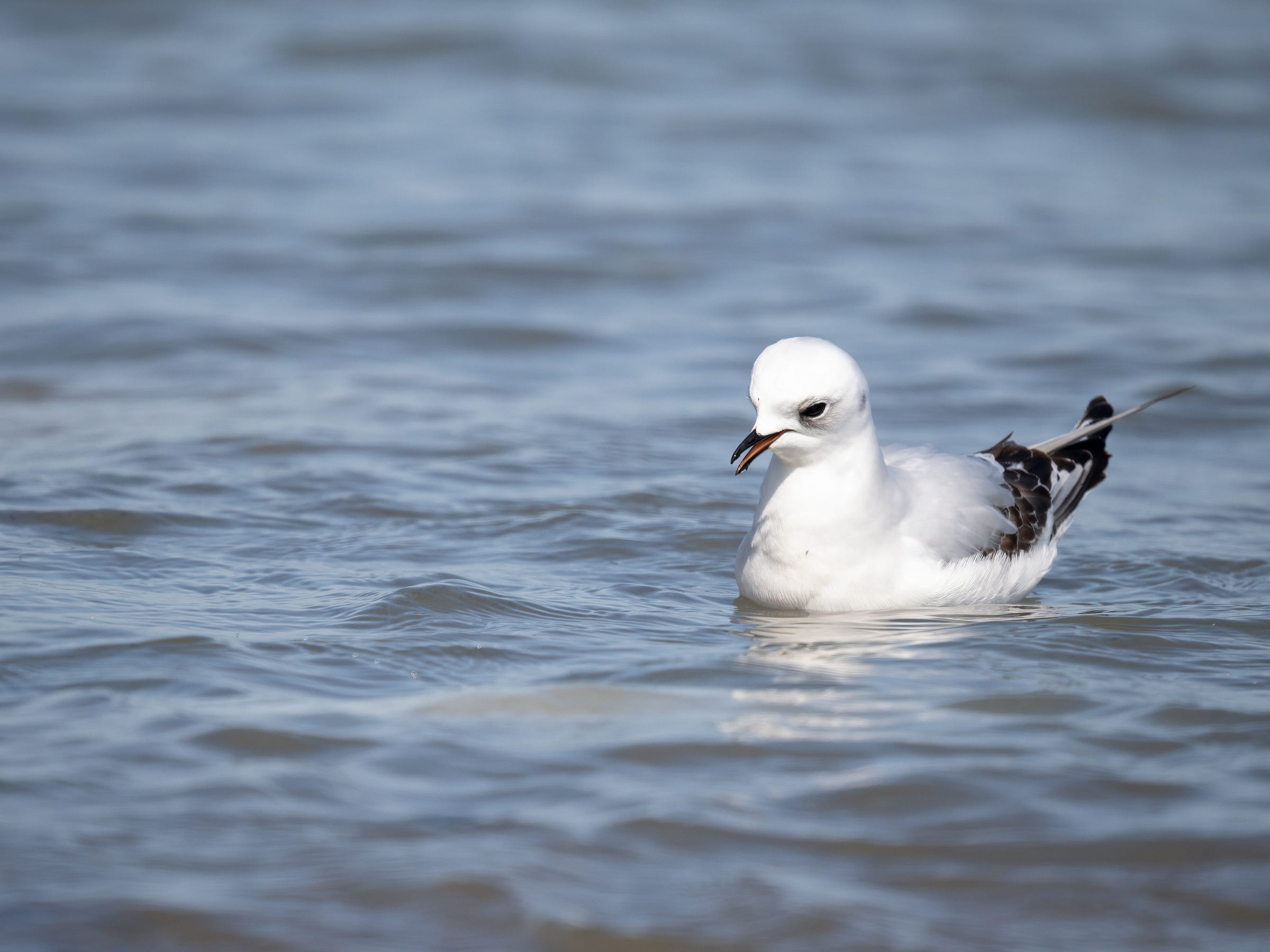
Art-making is another never ending learning adventure. Drawing in particular is one of my favorite activities because it’s a great way to deepen your observations and solidify memories—I notice more and remember more about the birds I’ve drawn compared to those I haven’t. Unfortunately, a lot of us give up drawing in elementary school. Those kids that do continue drawing continue to develop their skills, start earning labels like “talented”, and soon their skills seem unattainable. I can assure you that they are not. Drawing is a skill that you absolutely can develop with deliberate practice. If you’re willing to give it a try, be prepared to be frustrated because your initial efforts may not turn out exactly as you hoped, but persevere despite that. It’s worth the effort.

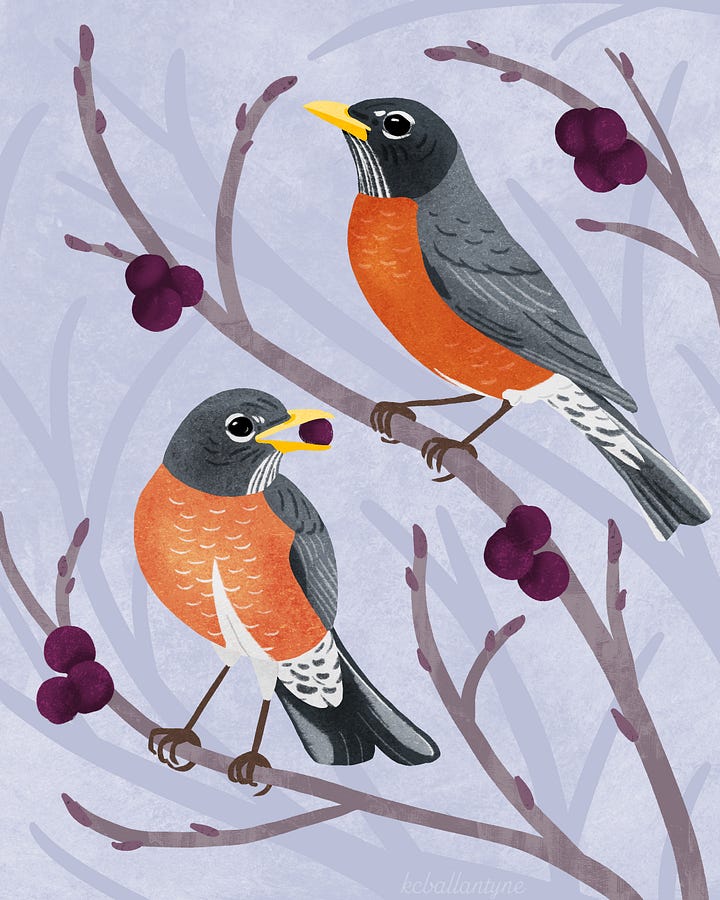
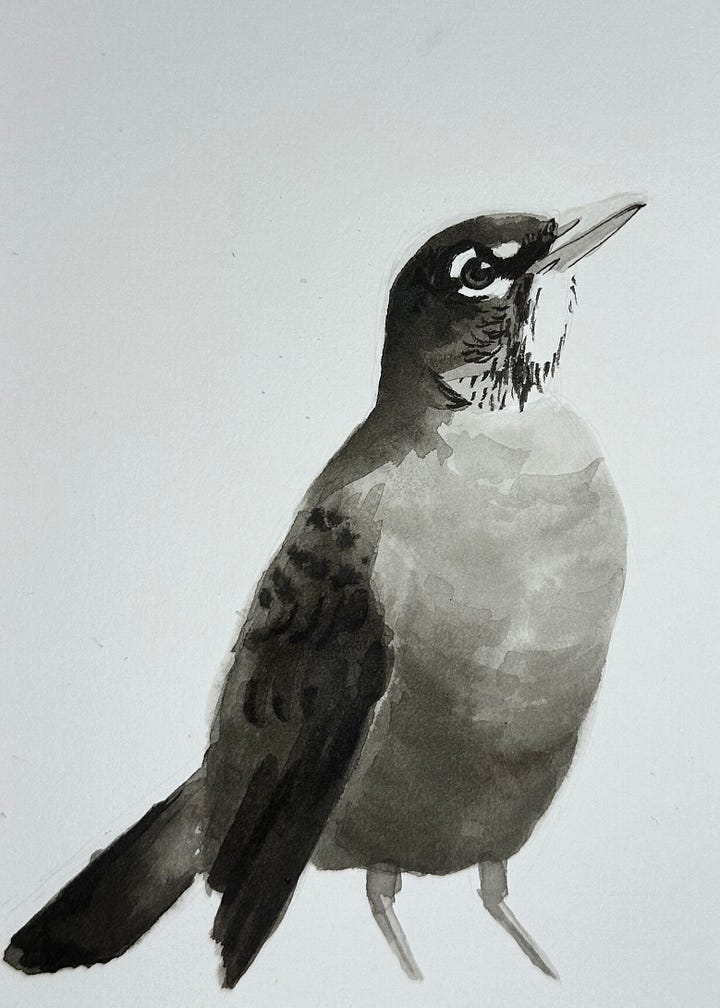
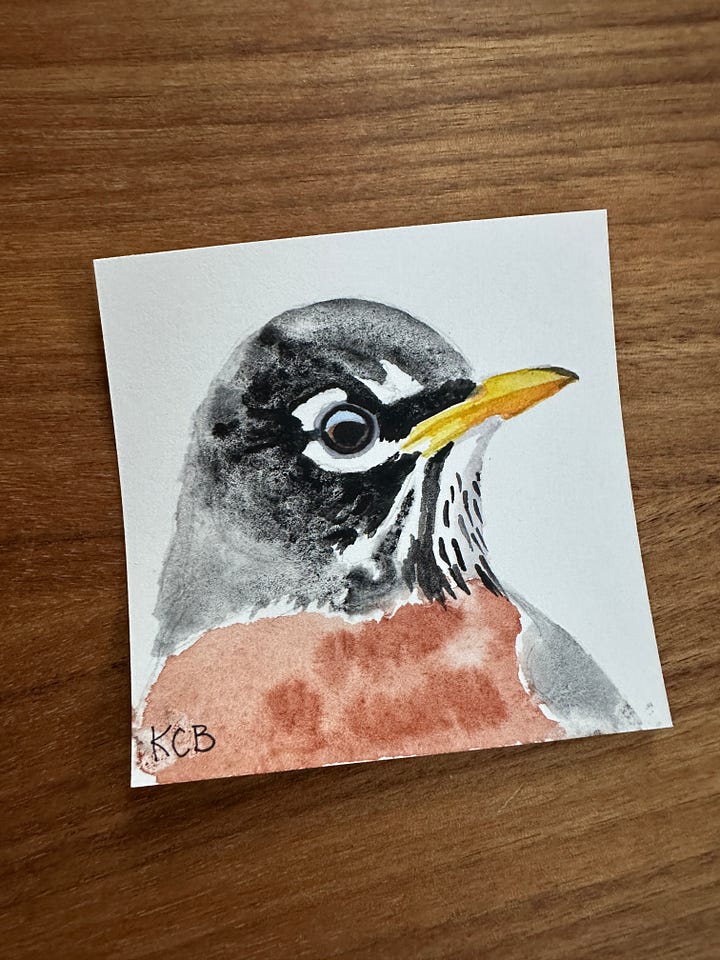
Nurture relationships and connect with social supports regularly
This is one facet of self-care that birding and art-making brought into my life quite unexpectedly and unintentionally.
When I first started birding, I joined several group birding walks. That was quite a shocker, as historically I avoided all social activities with strangers. The birds drew me in though, and I discovered that it was perfect for me. We focused on the birds and just generally enjoyed being outside and talking about birds together, and (bonus!) no one talked about work. What more could a socially anxious introvert want? As the years have passed, I’ve made many good friends through birding, all wonderful people I would never have had the chance to meet otherwise. Nathaniel Bowler over at Birding With Bilbow also wrote about making friends through birding this week, sharing that:
birders in general are generous in their willingness to help and extremely contagious in the spreading of bird joy.
If you’ve ever hesitated to join a group birding walk, whether it’s because you’re self-conscious about being new, are socially anxious, or lean introvert, please give it a try. Your fellow birders won’t disappoint you.

Art-making can help build and nurture relationships too. I’ve made many real-life friends out of people I met in the art and bird photography communities on Instagram, and I’m so grateful for the friends like you I’ve made here on Substack in the last few months. There are also several wonderful nature journaling communities around the globe, including the Chicago Nature Journaling Club and the Wild Wonder Foundation’s online community Wonderland. My experiences with the birding community gave me the courage and willingness to join these communities, and the Chicago Nature Journaling meet-ups are now the highlight of each month. If you’re thinking of dipping your toe into nature journaling, joining one of these groups is a great way to get started.
Have you found similar benefits from birding and art-making in your own life? Or are you someone that gave up drawing as a kid but have been curious about giving it a try again? I’ve been thinking about what else I may be able to offer this community, and bird drawing and field sketching workshops top the list. Last year I taught a few in-person “How to Draw Birds” and field sketching workshops and it was a joy to see people dive in, make mistakes, laugh, and learn. If that may be of interest to you, please let me know!
Now on to my favorite bird
The Northern Cardinal almost earned the spot this week but lost out to Wood Ducks. I was surprised to find one Wood Duck drake in the slough at LaBagh Woods on New Years Day, likely there because recent warm weather kept the water from freezing over. He looked like the lone person wearing a ballgown to a barbecue among the many Canada Geese and Mallards.
On January 3rd I headed over to Humboldt Park and was again blessed by Wood Ducks. The Humboldt Park Wood Ducks are always remarkably tame, and rather than flying away as soon as you make eye-contact, they swim up to you and cock their beautiful little heads to ask for food. I don’t feed them, but I do find this behavior charming. Here they are—aren’t they delightful?
Neat facts about Wood Ducks:
Wood Ducks have strong claws that allow them to grip bark and perch in trees—not so common in ducks.
Wood Ducks may occasionally dive to avoid predators (and they have many). They’ve been observed partially opening their wings and feet during dives, so they can swim underwater as well as on top of it!
Courageous from the start, Wood Ducklings dive from their tree-cavity nest to the forest floor when only one day old. They can drop from up to 50 feet without getting injured! Here’s an absolutely adorable video of this from the Smithsonian.
Thanks so much for reading! I hope you all have a wonderful week.
💜, Kelly
Images and illustrations: Kelly C. Ballantyne
Sources for Wood Duck Facts:
Hepp, G. R. and F. C. Bellrose (2020). Wood Duck (Aix sponsa), version 1.0. In Birds of the World (A. F. Poole, Editor). Cornell Lab of Ornithology, Ithaca, NY, USA. https://doi.org/10.2173/bow.wooduc.01




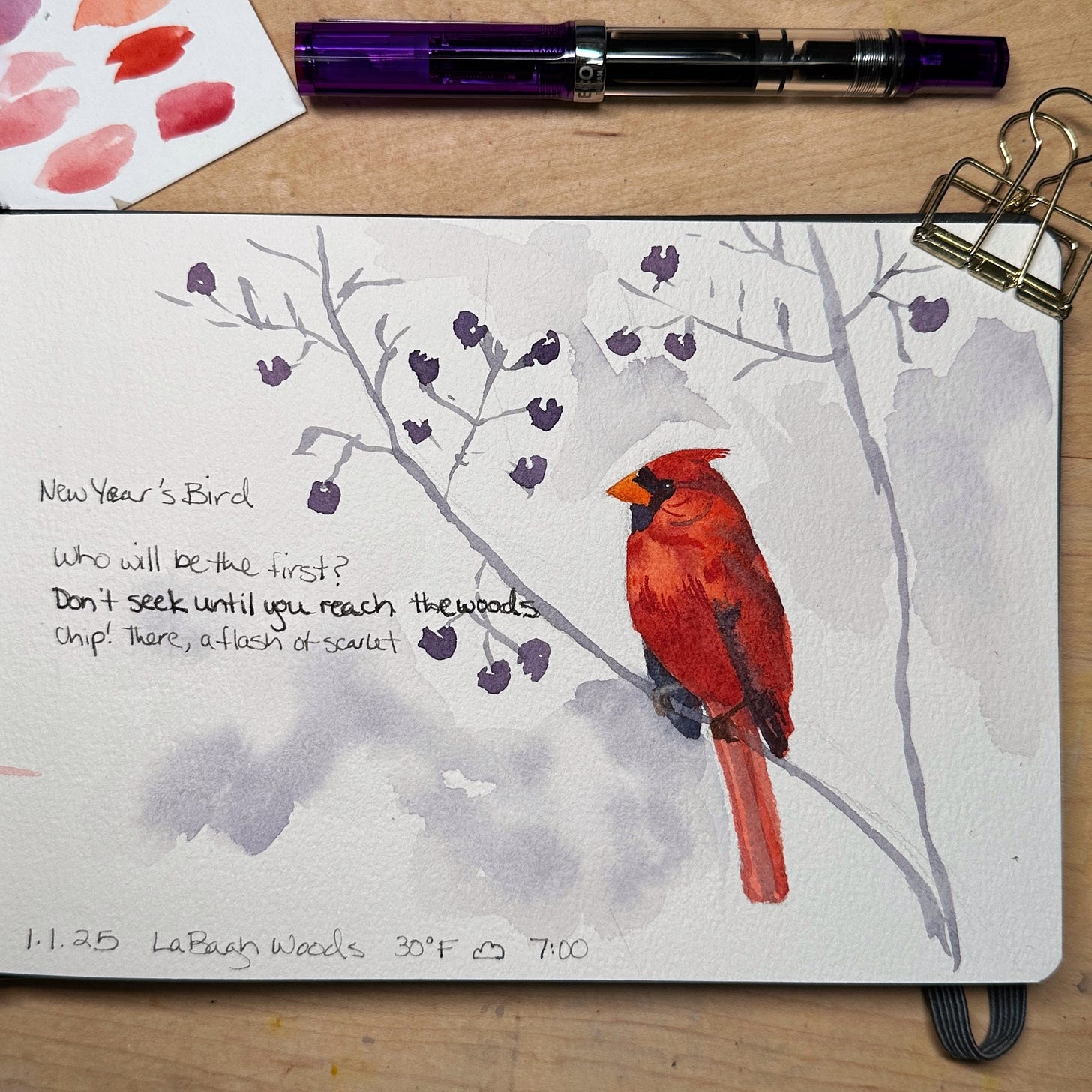
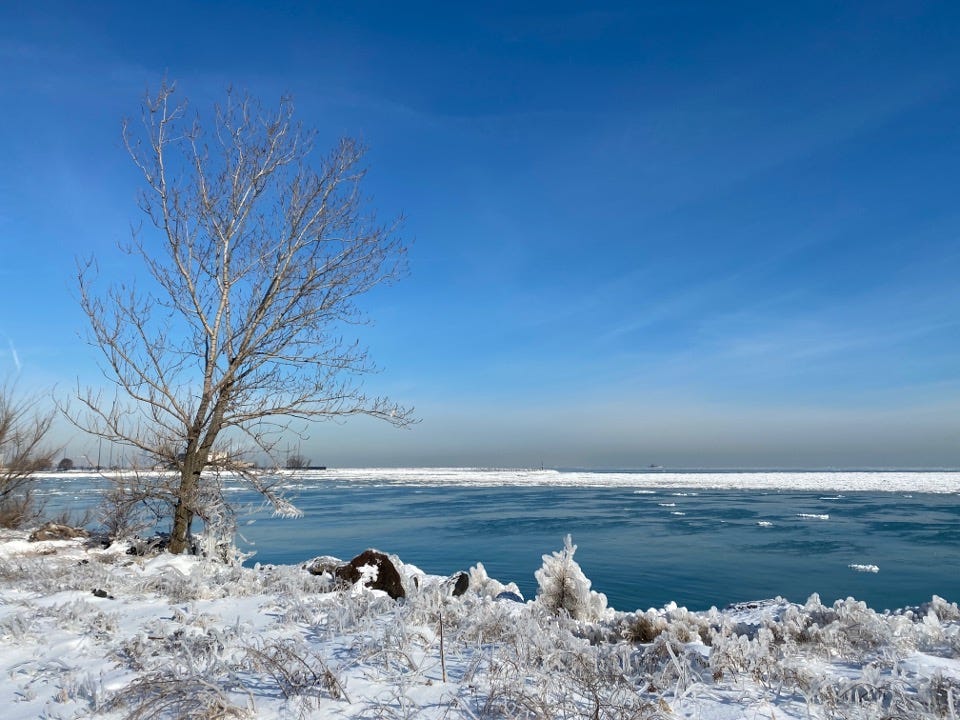
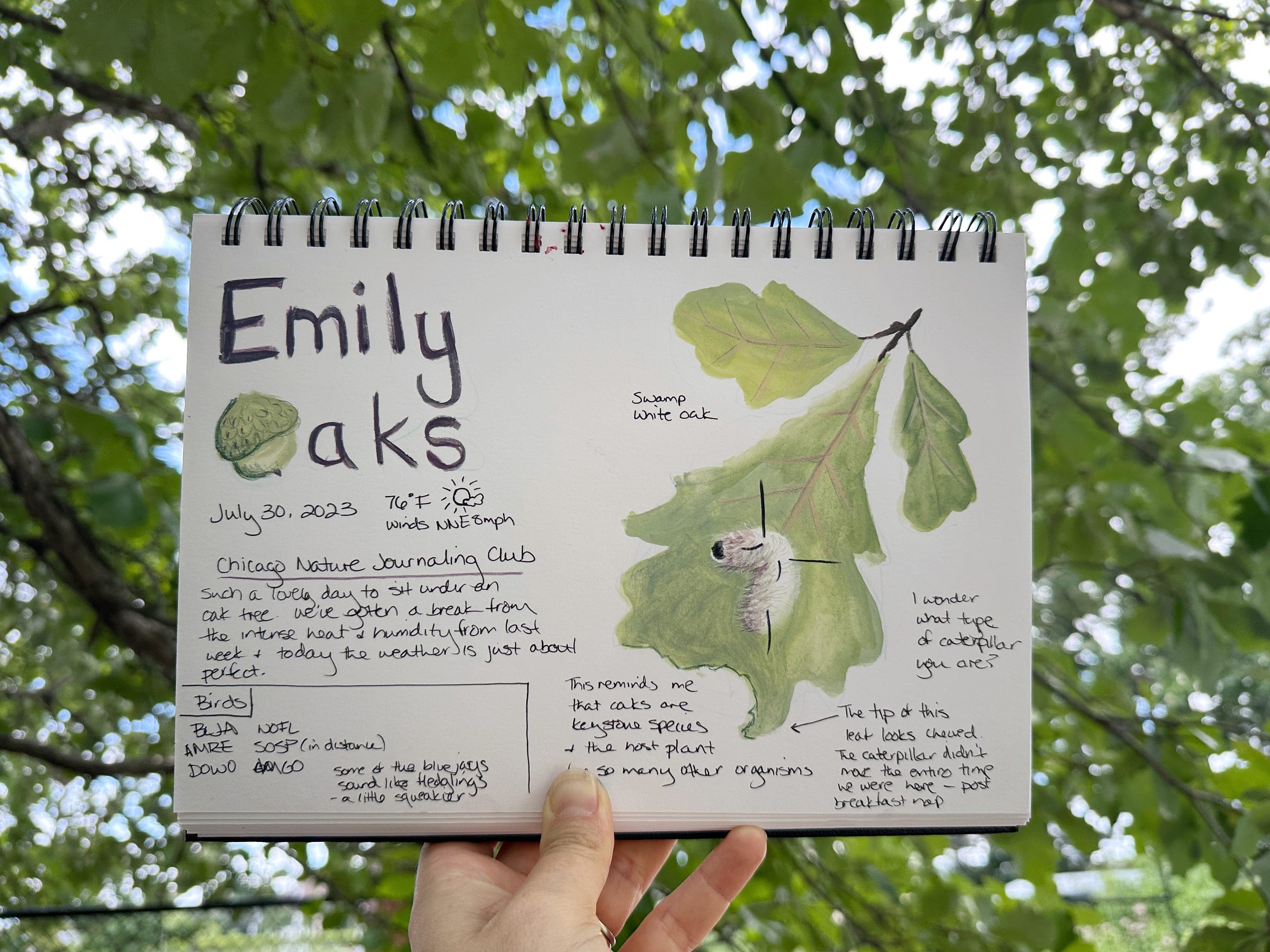

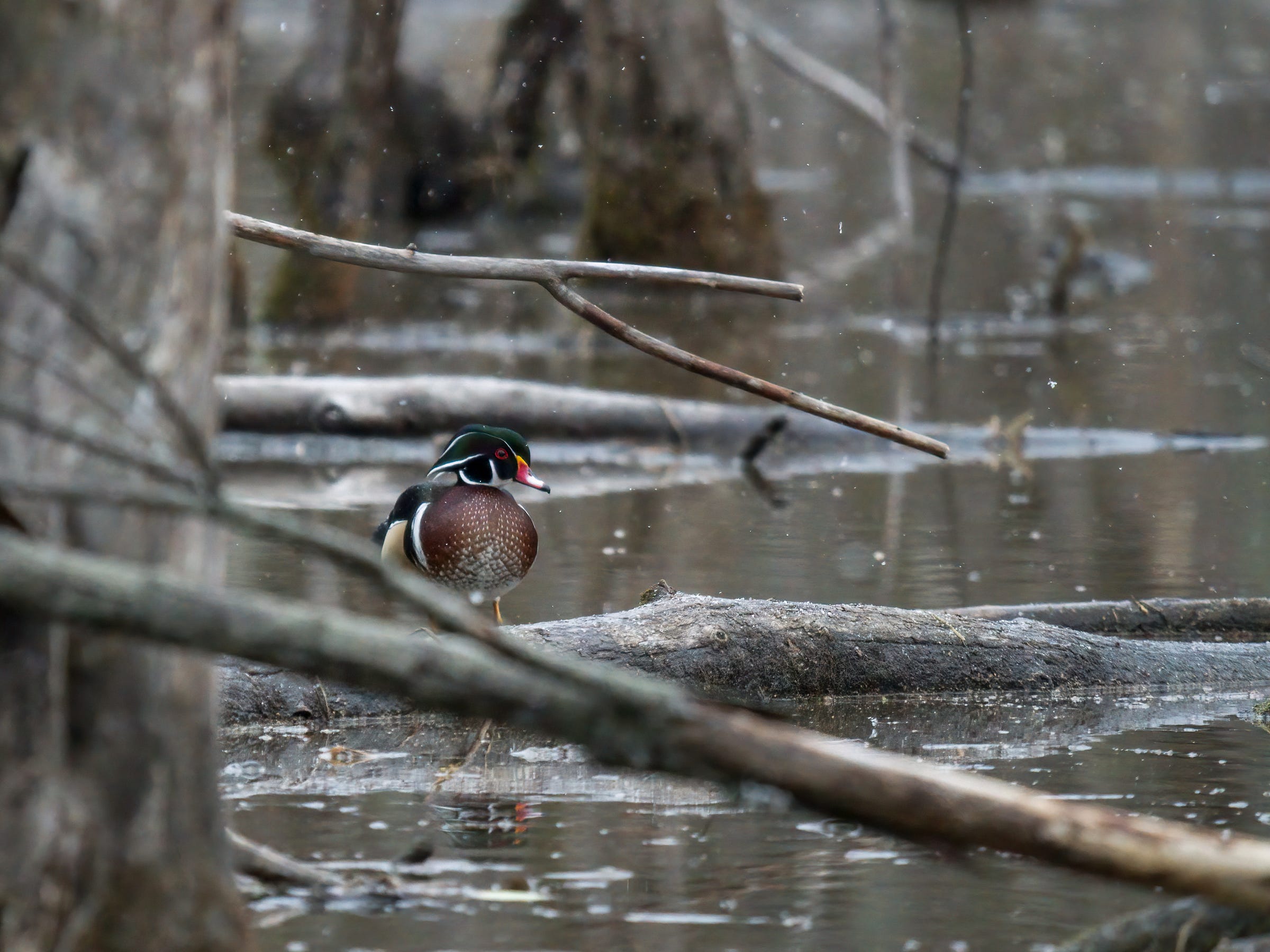
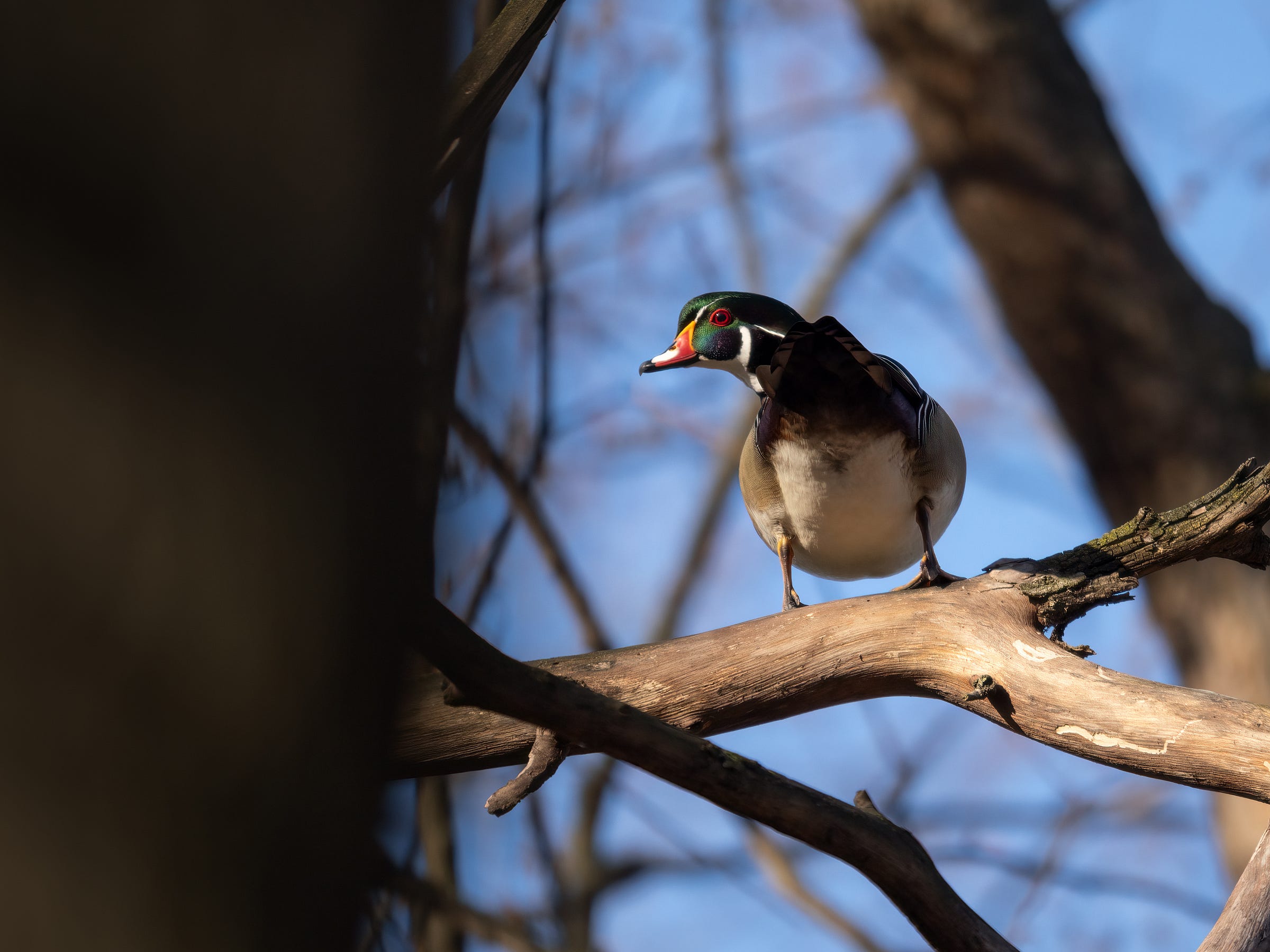
Kelly, I really enjoyed this post. I agree that birding and art making are good self care. As a fellow writer and photographer, I look at both as art making, however, I used to paint and have been hoping to add that back into my repertoire of art making in 2025.
I love your wood duck photos. The last photo of the wood duck in the tree looks as though he is truly posing to have his photo taken.
Oh boy I absolutely LOVE those Robins with the berries!!!
And this whole post is so right on. I've been trying to spread the bird joy to whomever will listen bc of the wonders it's done for me. Kind of an evangelist that way lol
Also, thanks for the link! :)